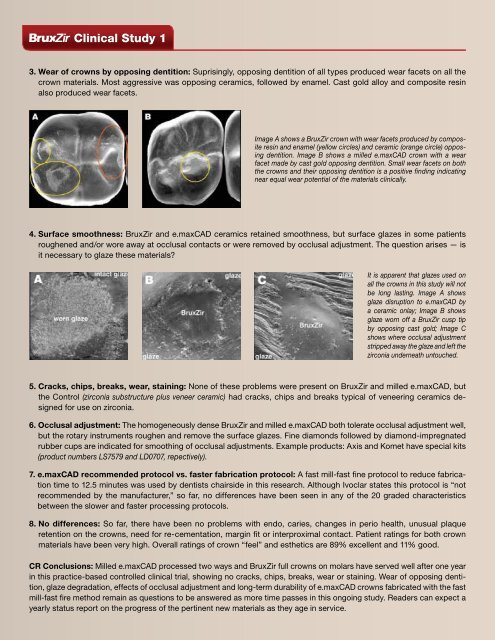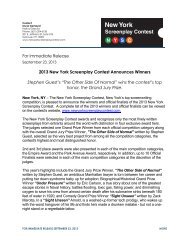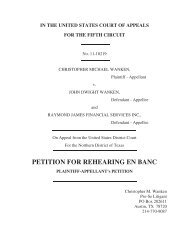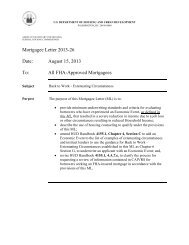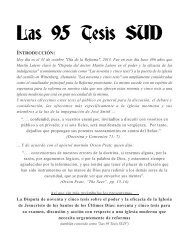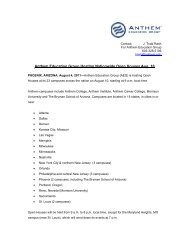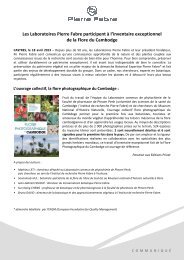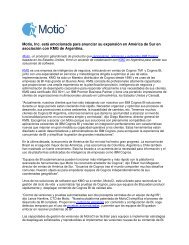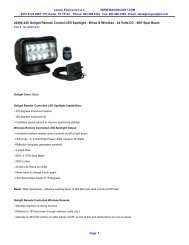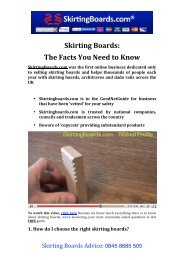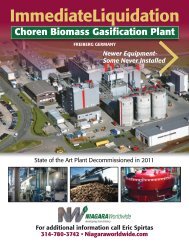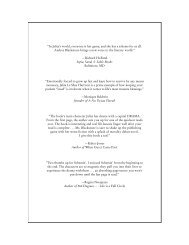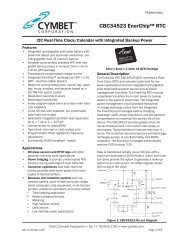Clinical & Scientific Documentation - PRWeb
Clinical & Scientific Documentation - PRWeb
Clinical & Scientific Documentation - PRWeb
Create successful ePaper yourself
Turn your PDF publications into a flip-book with our unique Google optimized e-Paper software.
<strong>Clinical</strong> Study 1<br />
3. Wear of crowns by opposing dentition: Suprisingly, opposing dentition of all types produced wear facets on all the<br />
crown materials. Most aggressive was opposing ceramics, followed by enamel. Cast gold alloy and composite resin<br />
also produced wear facets.<br />
Image A shows a BruxZir crown with wear facets produced by composite<br />
resin and enamel (yellow circles) and ceramic (orange circle) opposing<br />
dentition. Image B shows a milled e.maxCAD crown with a wear<br />
facet made by cast gold opposing dentition. Small wear facets on both<br />
the crowns and their opposing dentition is a positive finding indicating<br />
near equal wear potential of the materials clinically.<br />
4. Surface smoothness: BruxZir and e.maxCAD ceramics retained smoothness, but surface glazes in some patients<br />
roughened and/or wore away at occlusal contacts or were removed by occlusal adjustment. The question arises — is<br />
it necessary to glaze these materials?<br />
It is apparent that glazes used on<br />
all the crowns in this study will not<br />
be long lasting. Image A shows<br />
glaze disruption to e.maxCAD by<br />
a ceramic onlay; Image B shows<br />
glaze worn off a BruxZir cusp tip<br />
by opposing cast gold; Image C<br />
shows where occlusal adjustment<br />
stripped away the glaze and left the<br />
zirconia underneath untouched.<br />
5. Cracks, chips, breaks, wear, staining: None of these problems were present on BruxZir and milled e.maxCAD, but<br />
the Control (zirconia substructure plus veneer ceramic) had cracks, chips and breaks typical of veneering ceramics designed<br />
for use on zirconia.<br />
6. Occlusal adjustment: The homogeneously dense BruxZir and milled e.maxCAD both tolerate occlusal adjustment well,<br />
but the rotary instruments roughen and remove the surface glazes. Fine diamonds followed by diamond-impregnated<br />
rubber cups are indicated for smoothing of occlusal adjustments. Example products: Axis and Komet have special kits<br />
(product numbers LS7579 and LD0707, repectively).<br />
7. e.maxCAD recommended protocol vs. faster fabrication protocol: A fast mill-fast fine protocol to reduce fabrication<br />
time to 12.5 minutes was used by dentists chairside in this research. Although Ivoclar states this protocol is “not<br />
recommended by the manufacturer,” so far, no differences have been seen in any of the 20 graded characteristics<br />
between the slower and faster processing protocols.<br />
8. No differences: So far, there have been no problems with endo, caries, changes in perio health, unusual plaque<br />
retention on the crowns, need for re-cementation, margin fit or interproximal contact. Patient ratings for both crown<br />
materials have been very high. Overall ratings of crown “feel” and esthetics are 89% excellent and 11% good.<br />
CR Conclusions: Milled e.maxCAD processed two ways and BruxZir full crowns on molars have served well after one year<br />
in this practice-based controlled clinical trial, showing no cracks, chips, breaks, wear or staining. Wear of opposing dentition,<br />
glaze degradation, effects of occlusal adjustment and long-term durability of e.maxCAD crowns fabricated with the fast<br />
mill-fast fire method remain as questions to be answered as more time passes in this ongoing study. Readers can expect a<br />
yearly status report on the progress of the pertinent new materials as they age in service.


